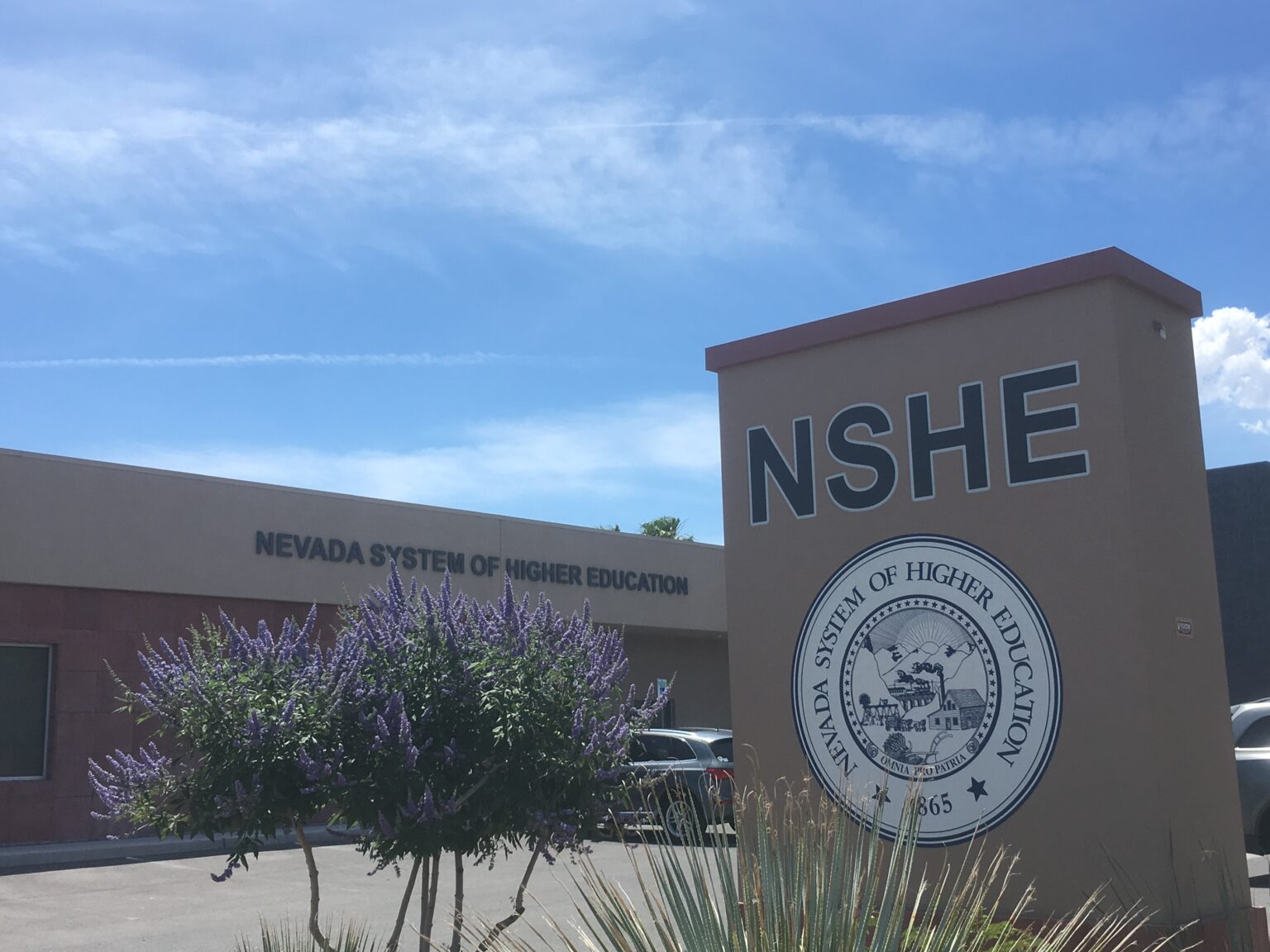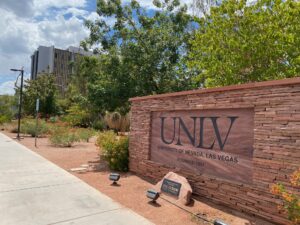5:26
News Story
Regents to consider higher ed student fee and tuition increase to pay for raises
Students enrolled in Nevada’s colleges and universities can expect to pay higher fees and tuition beginning next year under two proposals slated for consideration by the Board of Regents during meetings scheduled for Thursday and Friday this week.
“Nobody wants to increase student fees, including faculty,” says Kent Ervin of the Nevada Faculty Association, which represents professional employees at the state’s eight universities, colleges, and research institutes.
One option to be considered would increase student registration fees (in-state tuition), non-resident tuition, part-time non-resident tuition, and distance education tuition by 5% to help fund an 11% increase in salaries for all professional employees for fiscal year 2025, which starts July 1, 2024, with implementation delayed until October of 2024.
The second option would also increase fees and tuition for some students by 5% to pay for a 9.5% raise for all professional employees, effective July 1 of next year.
Under both options, 85% to 90% of the funds, depending on the institution, would be used for salaries.
Regents are attempting to fill a budget hole created by a lack of state funding during the pandemic, a decline in enrollment at some schools, and a gap in the amount of funding needed to cover 12% cost-of-living raises approved by Regents for the current fiscal year and the 11% or 9.5% COLAs contemplated for fiscal year 2025, according to budget documents.
Lawmakers this year appropriated about $100 million to offset the COLAs in the current year, and for NSHE’s state supported operating budgets for fiscal year 2025. The state allocates about two-thirds of the Nevada System of Higher Education’s funding, and student fees cover about 35%.
“The COLA on anybody that’s paid with non-state dollars, which is usually at least one-third to one half of every institution, has to be paid by the institution,” says Pam Levins, a former vice-president of finance for NSHE.
The COLA shortfall is estimated at about $62.7 million for the fiscal year 2025. The student fee increase will generate about $16.1 million, according to an NSHE report.
“The fiscal impact will be addressed through a combination of strategies, including an increase to the registration, non-resident and distance education fees, and operating budget reductions,” says a briefing paper for the Board of Regents.
Each institution has a unique budget situation, says Ervin. “It’s a combination of recent enrollment changes, and also the percentage of their operating budgets that are paid by the state versus students.” Schools with higher percentages of non-resident students fare better than those that rely on fees paid by residents.
The hardest hit institutions are expected to be those where enrollments have lagged the Board of Regents’ projections, according to Levins.
“A school like Nevada State doesn’t need as much to get out of the hole,” she says. “But a school like the College of Southern Nevada (CSN) that is in the worst situation needs a lot.”
Fee and tuition revenue at CSN for fiscal year 2023 was $40.8 million, down 21.6% from the Board of Regents’ projection of $52 million, according to a report prepared by the state.
The University of Nevada Reno collected fee revenue of $109.3 million, off $14.9 million, or 12% from the Regents’ budget projection of $124.2 million.
“Even with a fee increase, CSN and UNR will need to make some hard decisions, if they’re truthful about their deficit,” Levins says.
Backup material for this week’s Board of Regents meetings says in addition to fee increases, CSN intends to eliminate 20 positions if Regents vote to delay the 11% COLA until October of next year, and 35 positions should the COLA go into effect July 1.
In all, NSHE institutions contemplate eliminating 141 positions if the COLA goes into effect in October and 170.8 positions should it begin July 1.
Tuition and fees in Nevada average $6,434 a year – 31% below the national average of $9,375, according to the Nevada Faculty Alliance. That’s the third-lowest in the nation, according to averages compiled by the National Center for Education Statistics.
The NFA says the relatively low cost of higher education in Nevada is not a result of investment by the state.
“At $8,022, Nevada’s higher education appropriations per FTE including financial aid are 22% below the national average of $10,237 and ranks 34th,” says an NFA blog.
“We’d rather be funded by the state,” says Ervin. “But that hasn’t been the case, so here we are.”
Our stories may be republished online or in print under Creative Commons license CC BY-NC-ND 4.0. We ask that you edit only for style or to shorten, provide proper attribution and link to our website. AP and Getty images may not be republished. Please see our republishing guidelines for use of any other photos and graphics.




